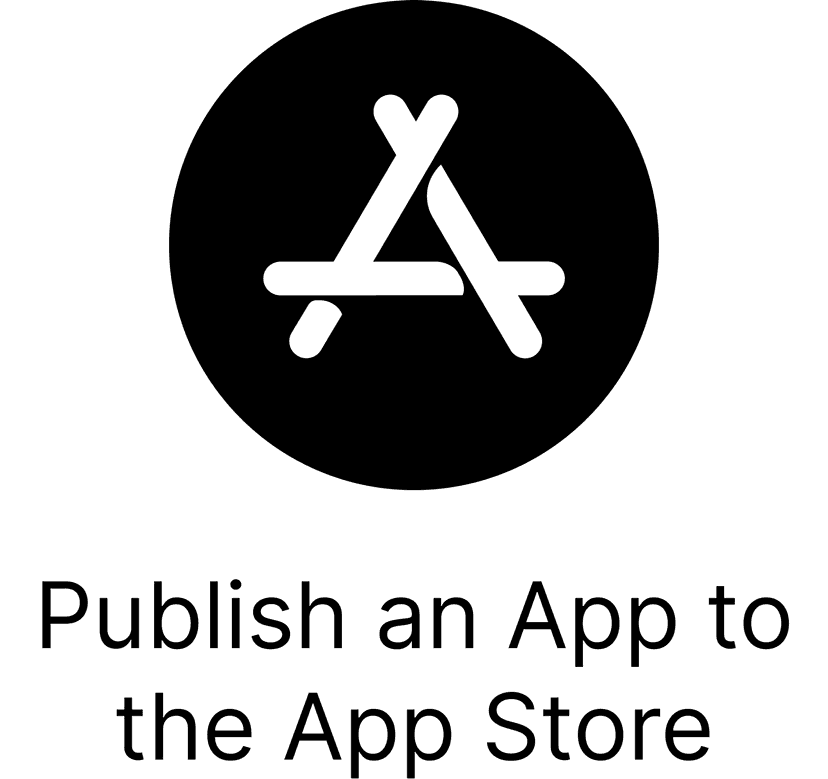Publish an iOS App to the App Store

How do I publish an iOS app to the app store?
The iOS App Store is a digital distribution platform, operated by Apple Inc., where users can browse and download apps for their iOS devices such as iPhones and iPads. It is a popular platform for developers to reach a global audience with their applications.
Launching an app to the iOS App Store is an exciting moment, but can be filled with stresses that you need to be sure you are ready to face.
5 steps to publish an app on the App Store:
- Develop your app using a compatible framework, such as SwiftUI or UIKit, ensuring that it meets Apple's App Store Review Guidelines and Human Interface Guidelines.
Tip: Familiarize yourself with the guidelines to avoid potential rejection during the review process. Below, you'll find a walkthrough of five important high-level
guidelines to be aware of. There is also an outline of five common reasons why apps get rejected, so you can be aware of what you should be on the lookout to avoid. - Register for an Apple Developer account, which costs $99 per year, to gain access to development resources and submit your app for review.
Tip: If you represent an organization, register using a company account for better branding and access to additional features.
- Use Xcode, Apple's integrated development environment (IDE), to develop, test, and debug your app.
Tip: Make use of the iOS Simulator within Xcode to test your app on various device types and screen sizes.
- Create an App Store Connect account to manage your app's metadata, pricing, and release information.
Tip: Provide detailed descriptions, high-quality screenshots, and app previews to increase your app's appeal and visibility.
- Submit your app for review through App Store Connect, ensuring that you have filled out all necessary information and adhered to Apple's guidelines.
Tip: Thoroughly test your app before submission to minimize the risk of rejection and expedite the approval process.
5 most important iOS App Store Guidelines:
- Safety: Ensure that your app provides a safe user experience and does not contain offensive or harmful content. Avoid user-generated content that promotes violence, discrimination, or illegal activities.
- Performance: Your app must be stable, responsive, and resource-efficient. Test your app extensively to eliminate crashes, bugs, and performance issues.
- Business: Make sure your app's monetization model complies with Apple's guidelines. In-app purchases must use Apple's in-app purchase system, and you cannot use third-party payment systems for digital goods or services.
- Design: Your app should follow Apple's Human Interface Guidelines to provide an intuitive and visually appealing user experience. Ensure that your app's user interface is consistent with Apple's design principles.
- Legal: Ensure that your app complies with all applicable laws and regulations in the territories where it will be available. This includes obtaining necessary licenses and permissions for the app's content and functionality.
5 common reasons for App Store rejections:
- Incomplete or inaccurate information: Make sure all the information provided in App Store Connect is accurate and complete, including app descriptions, screenshots, and contact information.
- Crashes and bugs: Thoroughly test your app to identify and fix any issues that may cause crashes or negatively impact the user experience.
- Non-compliant user interface: Ensure that your app's design follows Apple's Human Interface Guidelines, providing an intuitive and visually appealing experience.
- Violation of privacy guidelines: Your app must obtain user consent before collecting personal data and must have a clear privacy policy that outlines how user data is used.
- In-app purchase violations: If your app offers in-app purchases, make sure they are set up correctly using Apple's in-app purchase system and that they comply with Apple's guidelines.
By adhering to Apple's guidelines and addressing these common reasons for rejection, you can significantly increase your chances of getting your app approved on the iOS App Store. Make sure to review the full App Store Review Guidelines before submitting your app for review.
It's one thing to know how to publish an app to the App Store, but that is worthless if you don't know when you should do it. Let's break down the relevance of this question based on two high level categories. We'll walk through an explanation as well as provide a score, 1-10, that shows you how relevant this question is whether you do or don’t have a product.
Pre-Product: 1/10
The first scenario we will walk through will be if you do not have a product yet. Whether it is a website or a mobile app, you are still in the ideation or planning phase and have not yet built anything. Maybe you have started development but just aren’t finished with your first version. Whichever it is, we'll get into why this question is or isn’t relevant and why you should or shouldn't care about it if you do not have a product.
If you do not yet have a product to sell, publishing an app on the iOS App Store may be premature. Focus on developing a high-quality app that meets user needs and adheres to Apple's guidelines before considering submission.
Live Product: 8/10
The second category is if you do have a live product. Maybe you just launched your business or maybe it's been live for years and you're continuing to improve its quality and release new features. Regardless of the scenario, if your product is live, this question carries a different weight of relevance.
If you have a live product you are selling, publishing an app on the iOS App Store can be a great opportunity to expand your reach, increase brand visibility, and generate additional revenue.
Here are the top 5 tools and services that can help you launch an app on the iOS App Store:
- Xcode: Apple's official IDE, essential for iOS app development, testing, and debugging.
- CocoaPods: A dependency manager that simplifies the integration of third-party libraries in your app.
- TestFlight: An Apple service that enables beta testing of your app with a limited number of users before submitting to the App Store.
- Fastlane: An automation tool that streamlines the app submission process and manages app metadata, screenshots, and deployment.
- App Store Optimization (ASO) tools: Services like AppTweak, AppRadar, or SensorTower can help improve your app's visibility and discoverability on the App Store.
- The iOS App Store is a digital distribution platform for iOS apps.
- Launching an app on the iOS App Store involves developing the app, registering for an Apple Developer account, using Xcode, creating an App Store Connect account, and submitting the app for review.
- Focus on developing a high-quality app before considering submission if you do not yet have a product to sell.
- Launching an app on the iOS App Store can expand your reach and generate additional revenue if you have a live product.
- Xcode, CocoaPods, TestFlight, Fastlane, and ASO tools can help you launch an app on the iOS App Store.

